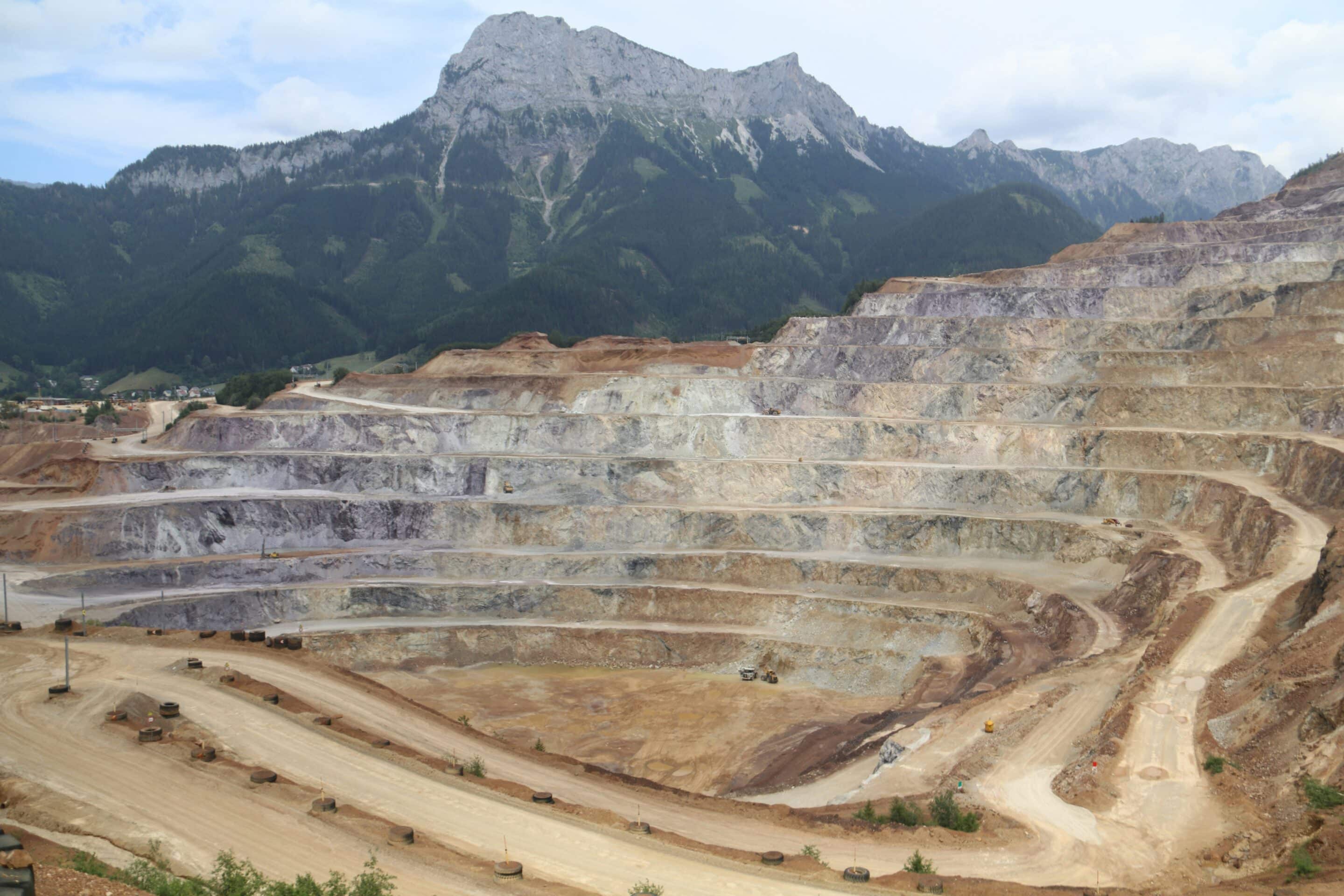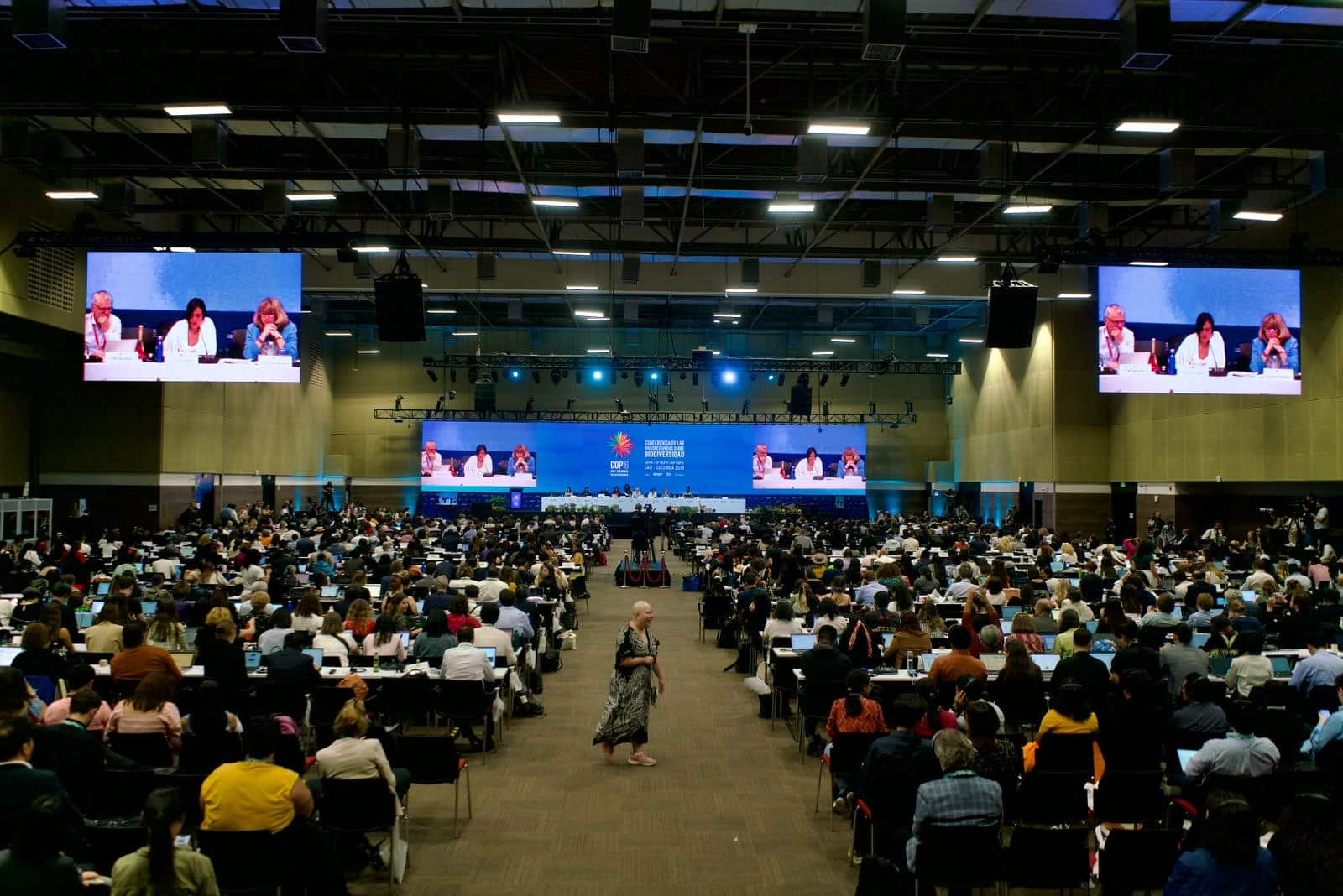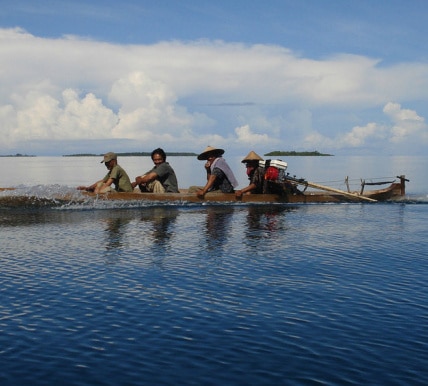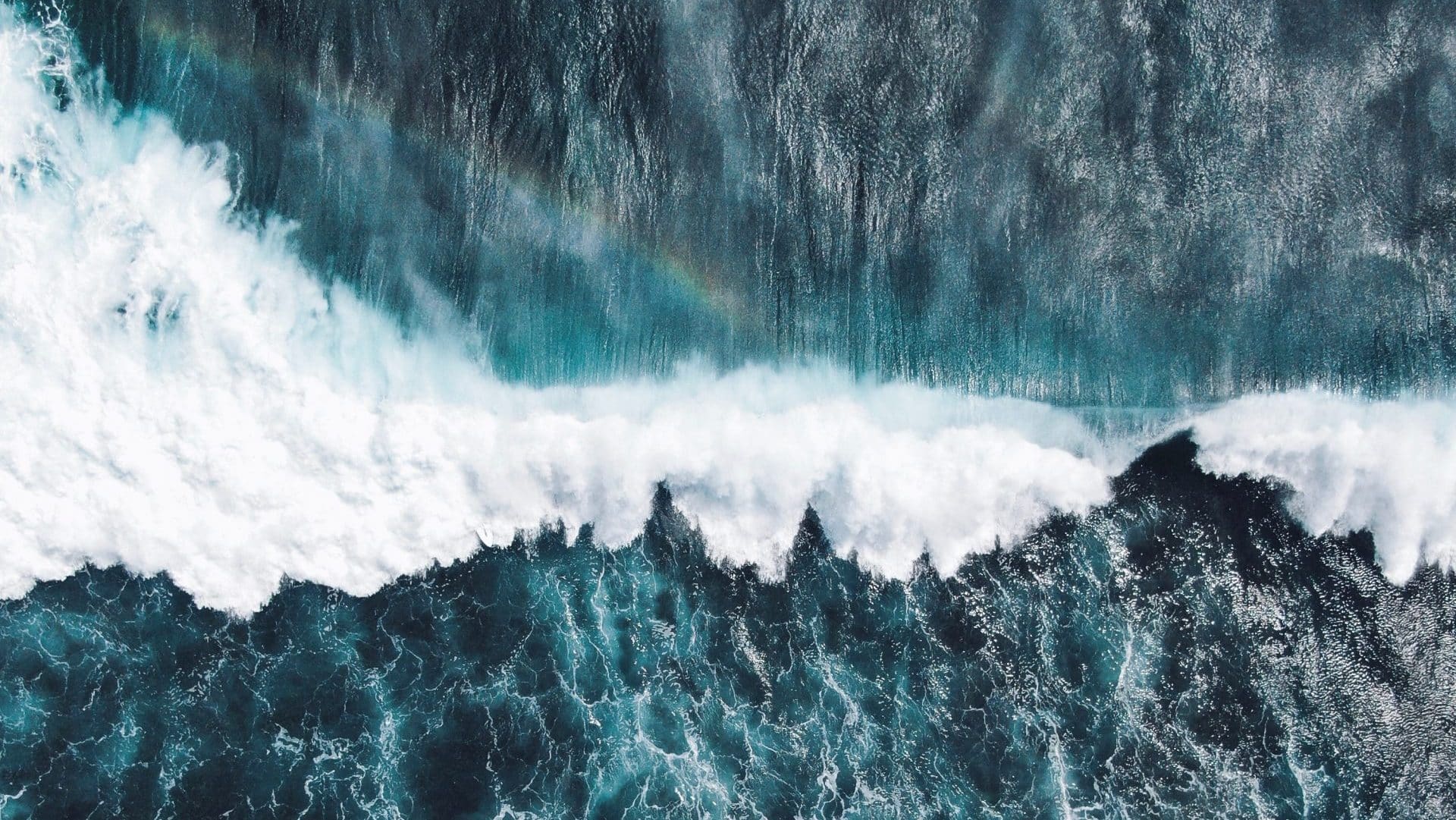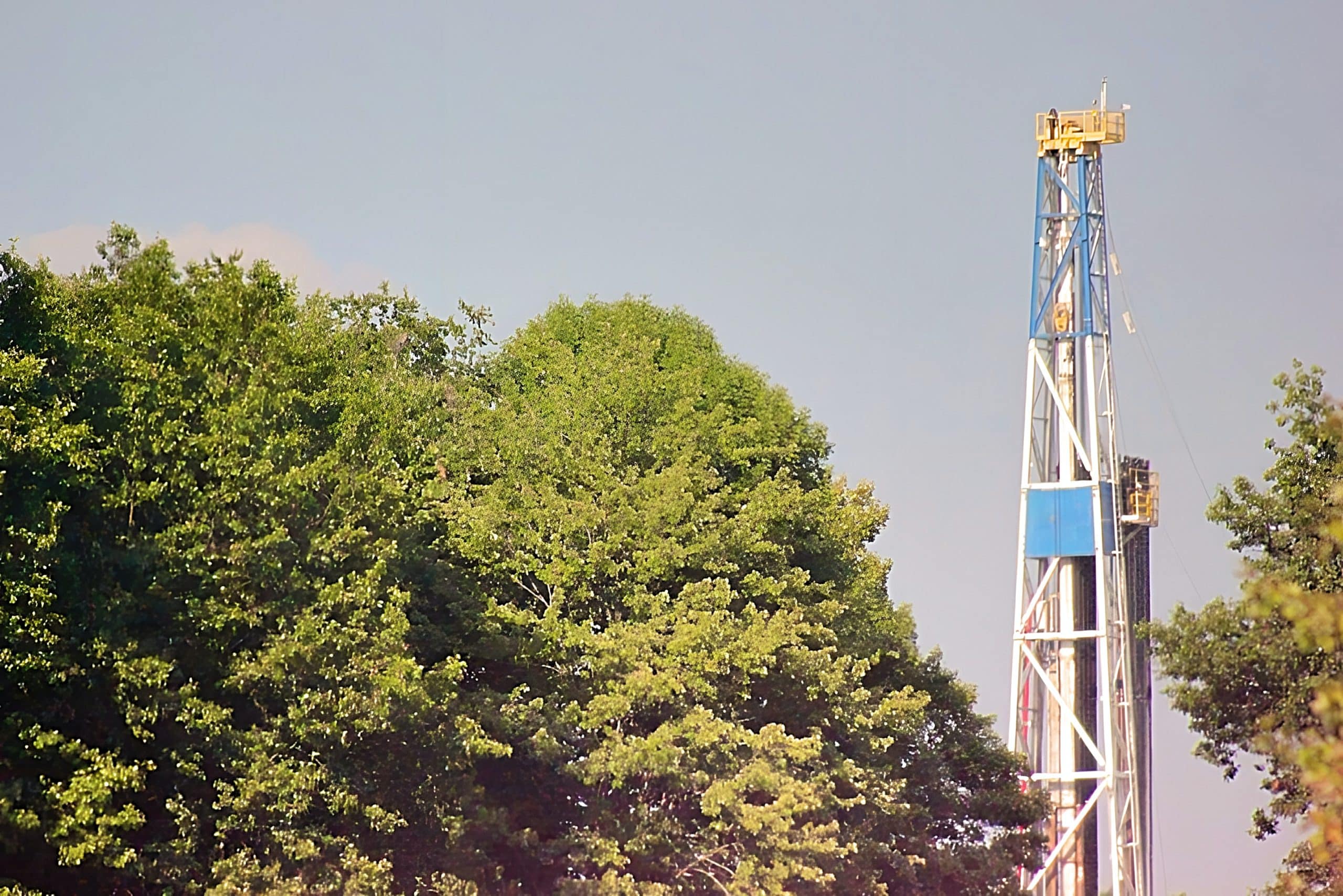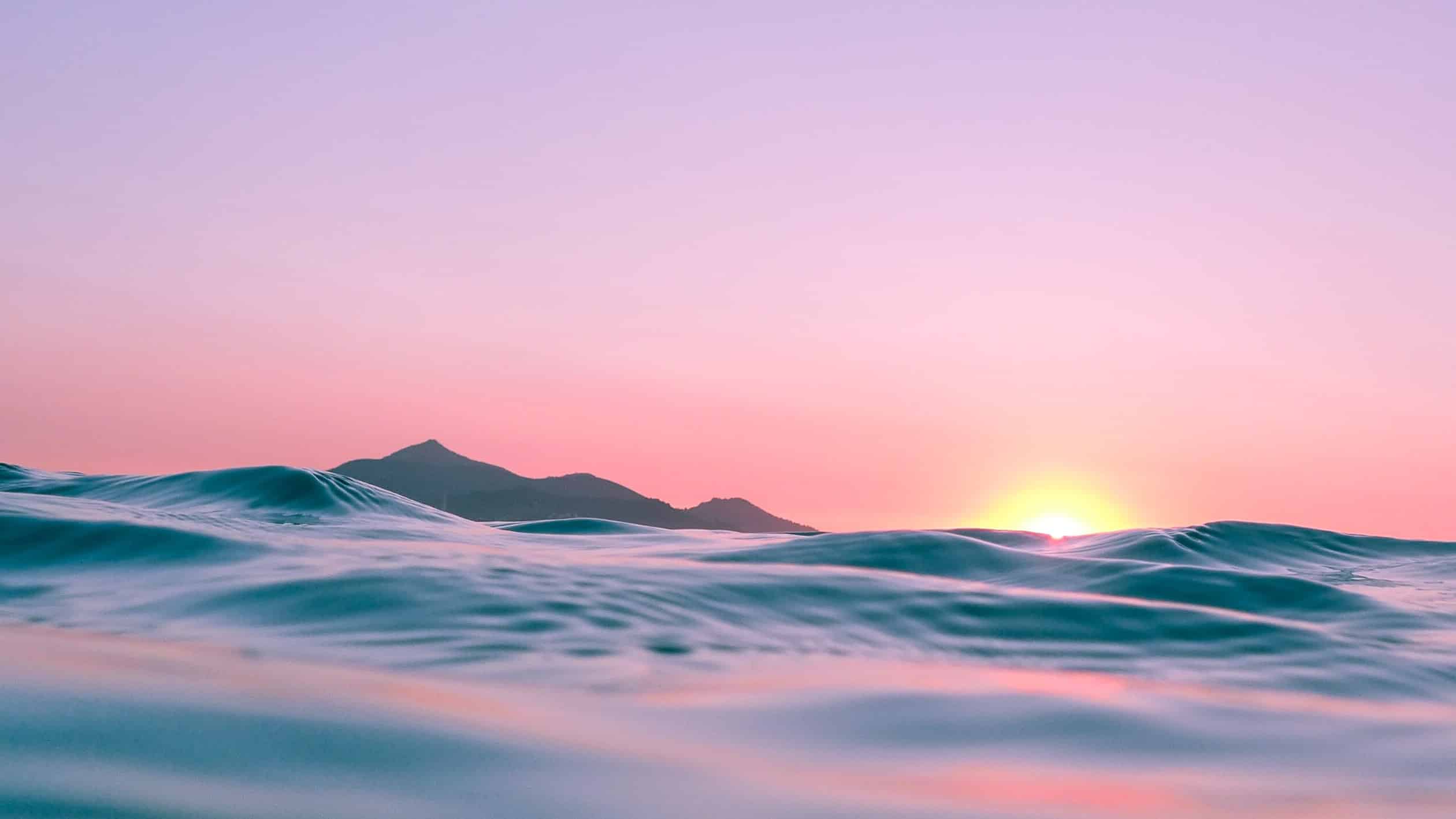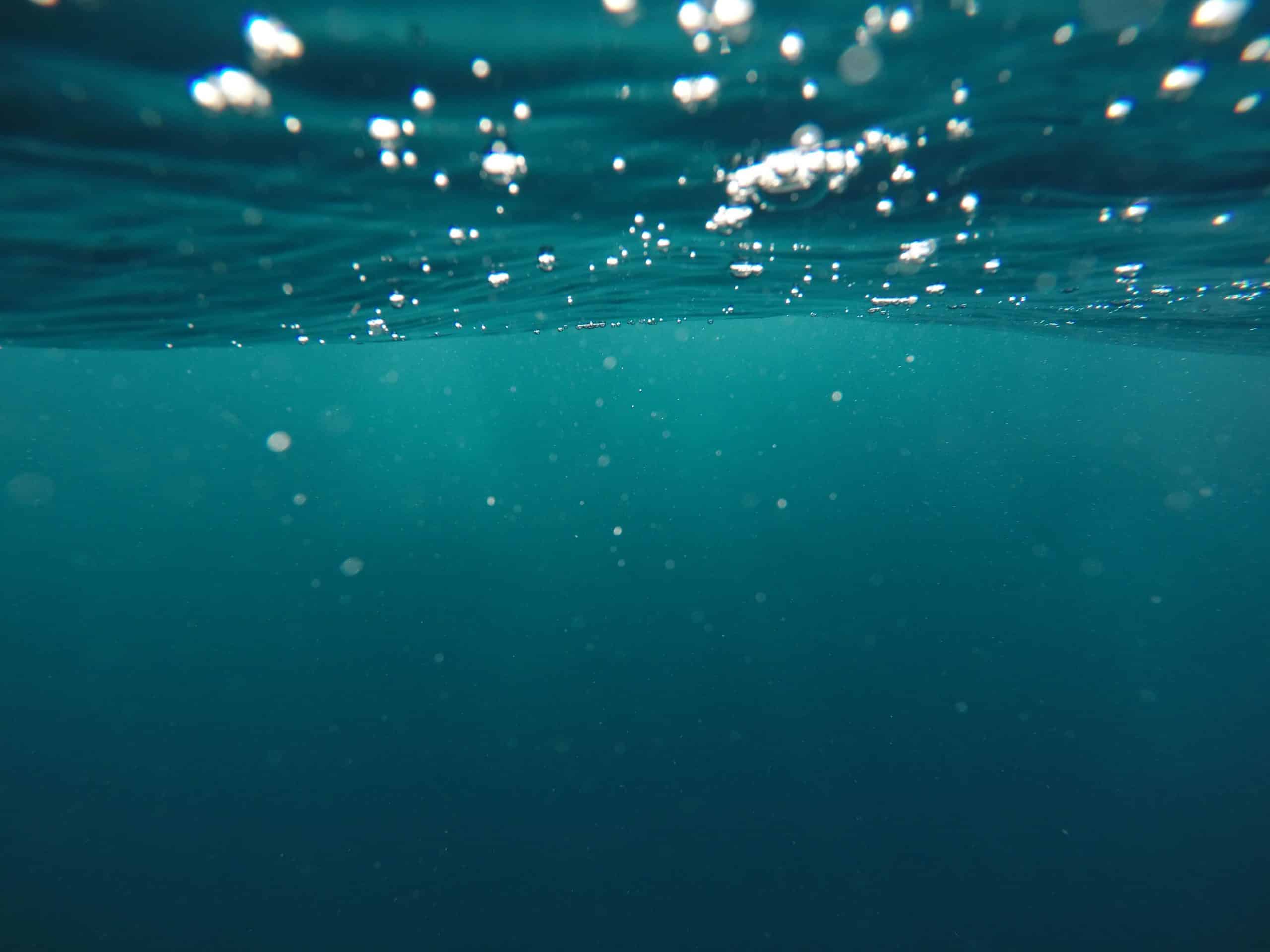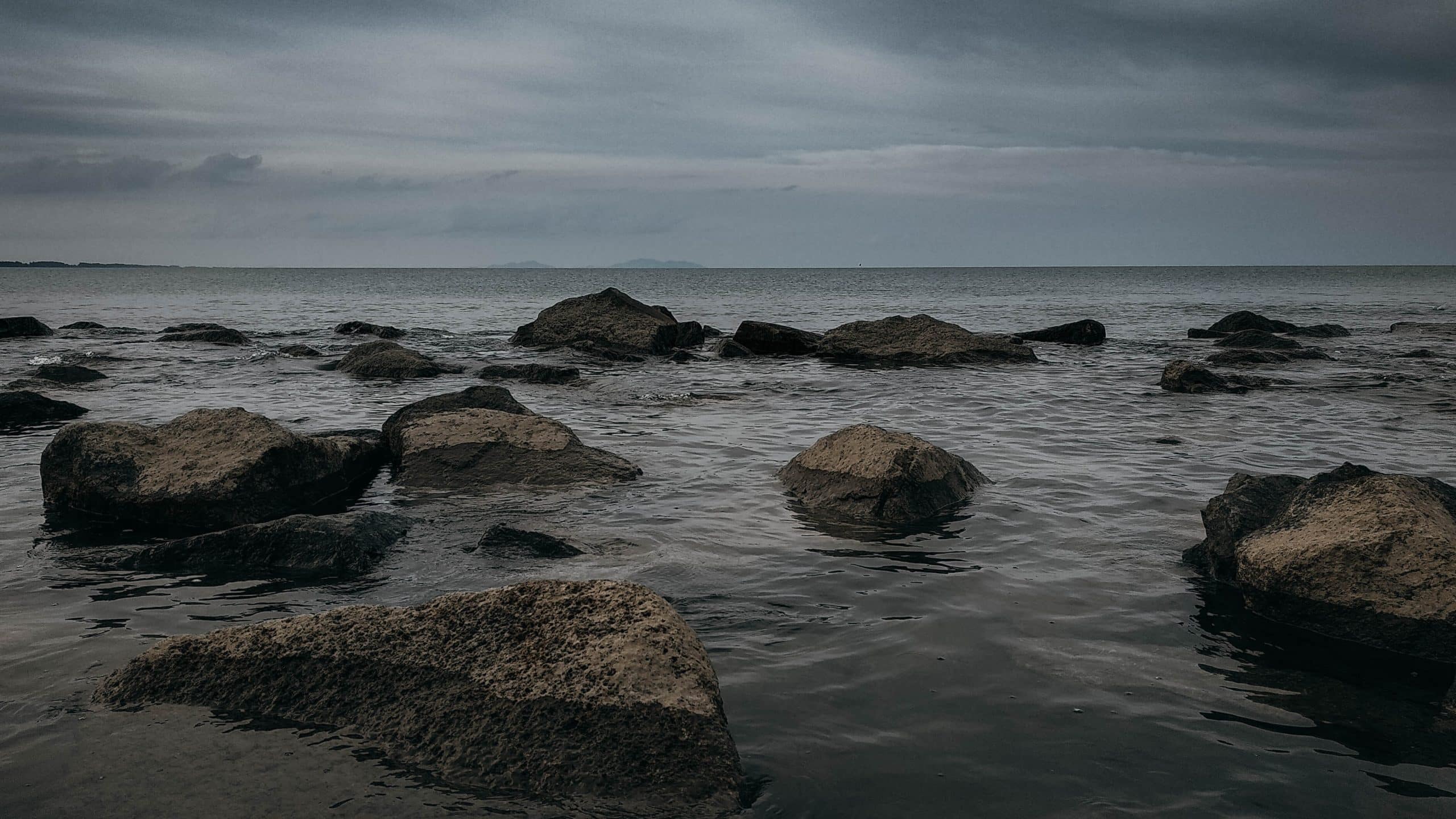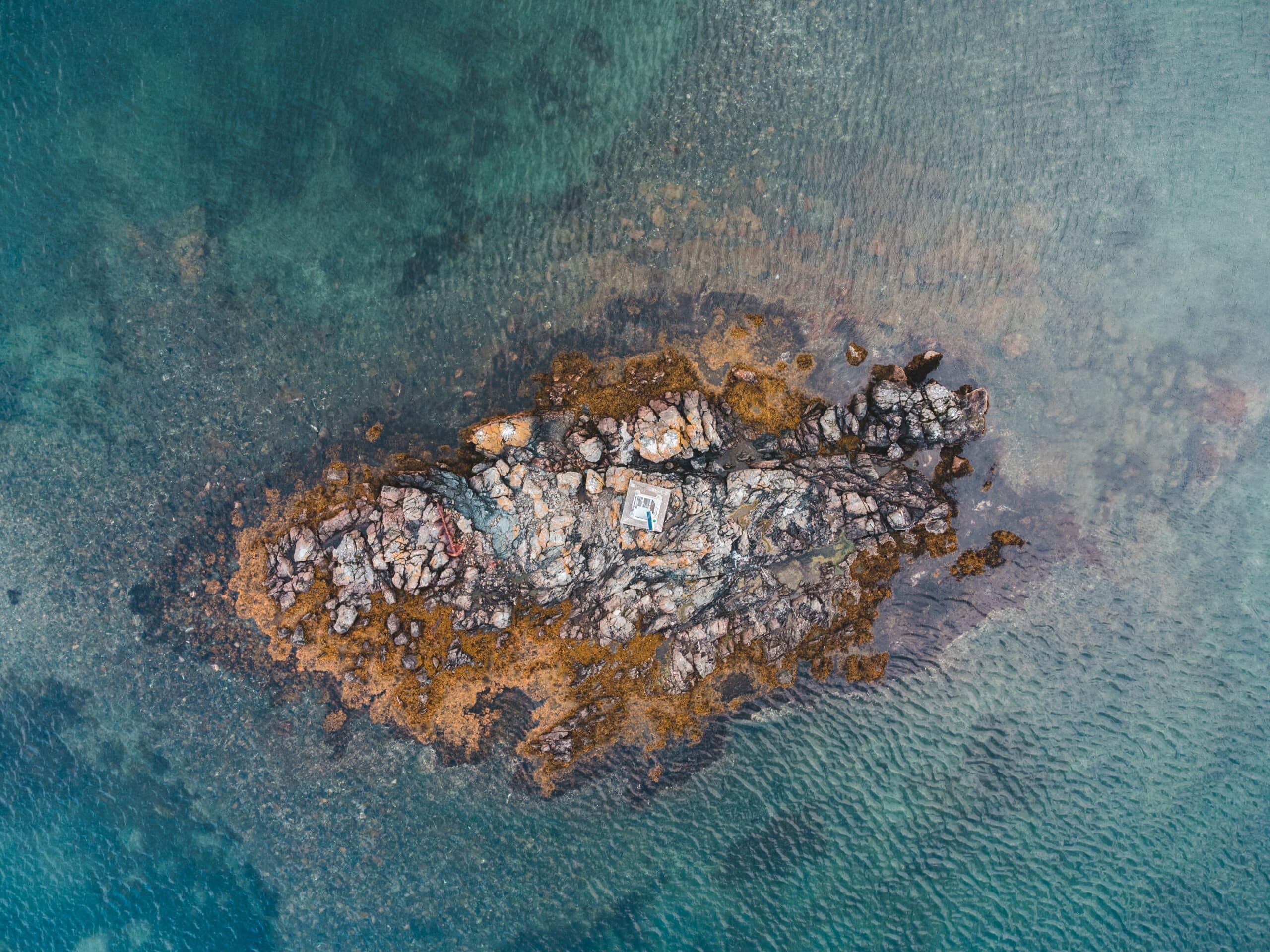Ocean Fertilisation
Type
Areas of deployment
Proposal
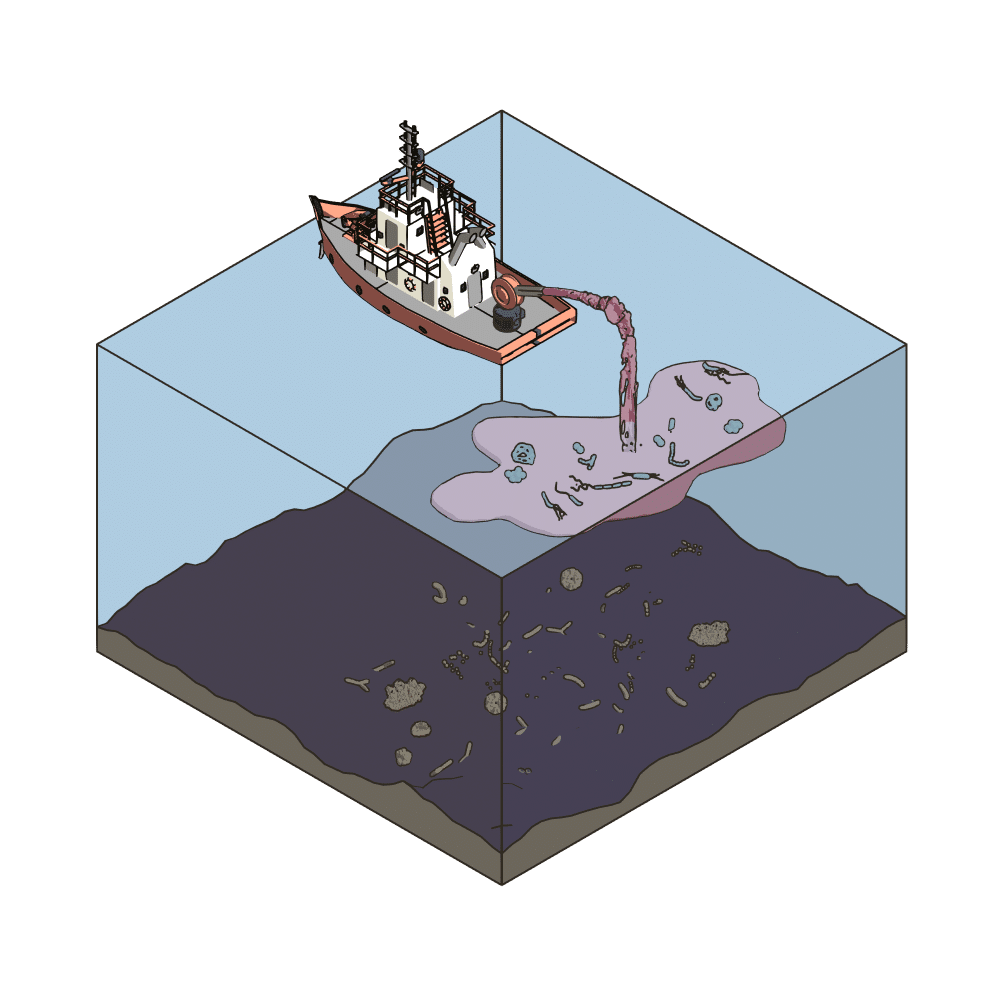
Featured project
Show on map
Latest technology update
Show update
Description and purpose of the technology
Ocean fertilisation (OF) is a theoretical carbon dioxide removal technology that refers to dumping large amounts of micro or macronutrients (like iron or urea) into ocean areas with low biological productivity, aiming to stimulate the growth of phytoplankton. The assumption driving OF efforts is that new phytoplankton growth will absorb atmospheric carbon dioxide, and store carbon as it dies and sinks to the ocean floor. Over the last 30 years, there have been at least 16 open-ocean fertilisation experiments, all of which have failed to prove that OF is an effective carbon removal strategy. Some scientists warn that OF could create deoxygenated “dead zones”, and deplete nutrients that would fuel phytoplankton growth in other areas. These are some of the reasons why the United Nations, the United Nations Convention on Biological Diversity (CBD) and the London Convention on the Prevention of Marine Pollution adopted decisions to strictly regulate OF activities, which constitute de facto bans against all forms of commercial deployment.
Actors involved
One of the first large-scale OF experiments was the LOHAFEX expedition in 2009, where researchers, co-sponsored by the Indian and German governments, dumped 20 tons of ferrous sulphate over 300 km2 of open ocean east of Argentina. Although the German Environment Minister tried to put a halt to the experiment based on the UN CBD moratorium on ocean fertilisation, the LOHAFEX experiment went ahead. [1]
A notorious OF advocate has been businessman Russ George, who created Planktos Inc. The US-based, private company conducted an initial OF test off the coast of Hawaii from a yacht in 2002. Soon after, Planktos announced plans to dump 100 tons of iron particles over 10,000 km2 of international waters near the Galapagos Islands, a location chosen because, among other reasons, no government permit or oversight would be required. These plans, as well as a similar project near the Canary Islands, were cancelled due to negative publicity and Planktos was barred from using ports by the Ecuadorean and Spanish governments.
Years later, Russ George reappeared with the Haida Salmon Restoration Corporation, which pitched OF as a method for boosting salmon populations off the Haida Gwaii archipelago, off of Canada’s west coast. In 2012, 120 tons of ferrous sulphate were dumped into the Pacific Ocean—the largest-ever OF dump. An international outcry led to an investigation by Environment Canada’s enforcement branch—the project was cancelled. [2]
Several entrepreneur scientists involved in the Haida project have resurfaced in the Vancouver-based Oceaneos Marine Research Foundation. Since 2016, Oceaneos has been seeking permits from South American governments to dump iron off their coasts for OF experiments. In Chile, Oceaneos plans to release up to ten tons of iron 130 km off the coast of Coquimbo. Similar requests were filed in Peru and Argentina. The projects have been sharply criticised by ocean scientists in Chilean research institutions. [3]
KIFES, the Korean Iron Fertilisation Experiment in the Southern Ocean, is a research program designed and led by the Korean Polar Research Institute (KOPRI), and aims to provide “a clear answer as to whether or not ocean iron fertilisation is promising as a geoengineering solution.” It is funded by the Korean Ministry of Oceans and Fisheries and carried out in cooperation with domestic and international partners. KIFES aims to conduct OF tests in the eastern Bransfield Basin, not far from the Antarctic Peninsula. Although these plans didn’t gain approval during a London Convention meeting in 2017, KOPRI announced plans for two more OF experiments, each involving two tons of iron being dumped, covering an ocean area of 300 km². [4] However, there is no evidence that these experiments have since taken place.
The Ocean Nourishment Corporation Pty Ltd (ONC) and the Ocean Nourishment Foundation Ltd (ONF) are two more commercial OF companies, both based in Australia and headed by Ian Jones. ONC planned to dump 500 tons of urea nitrogen into the Sulu Sea in 2007, with potentially devastating impacts on over 10,000 artisanal fisherfolk and algae growers, but a campaign organised by a coalition of civil society groups and the Philippine government forced the cancellation of the experiment. In 2019, ONF announced plans to fertilise the ocean in Moroccan waters, close to El Jadida. Ian Jones has taken out patents that claim, astonishingly, to own any fish nurtured through ocean fertilization. [5] The El Jadida project was subsequently abandoned for unknown reasons.
The United Nations established a de facto moratorium on OF in 2008 through the Convention on Biological Diversity, [6] and on geoengineering in general in 2010. [7] The London Convention / London Protocol (LP) to prevent marine pollution also adopted a moratorium in 2008, which was later amended in 2013 to prohibit a specific list of new marine geoengineering techniques (except for legitimate scientific research), included in which was OF. [8]
Impacts of the technology
There is wide scientific agreement that OF could have negative impacts on the marine food web. This would also have huge negative impacts on artisanal fisherfolk, algae growers and the livelihoods of coastal communities, as was shown in the case of ONC in the Sulu Sea.
OF studies conducted so far show how phytoplankton communities quickly become dominated by larger diatom phytoplankton, which is very concerning from an ecological viewpoint as phytoplankton species form the base of the marine food web. Any changes in the phytoplankton community will have unknown, unpredictable and potentially highly damaging impacts on the food web in marine ecosystems. Phytoplankton blooms also reduce oxygen levels, impacting negatively on many marine organisms. A modelling study of large-scale iron fertilisation predicted that it would lead to significant deep-ocean oxygen depletion in the region studied. OF could also lead to eutrophication and/or harmful toxin-producing algal blooms. [9]
OF also results in other essential nutrients being depleted by the phytoplankton bloom, which could negatively affect down-current phytoplankton that depend on these nutrients and reduce overall biological productivity. This would have a negative knock-on impact on all other marine life. This would be detrimental for communities that depend on fishing and the cultivation of different marine resources. Modelling studies have also predicted that commercial-scale iron fertilisation in the oceans could have a significant detrimental impact on fisheries. [10]
Experiments have shown that a number of greenhouse gases are released through OF, which on a large-scale could initiate positive feedback effects on the global climate. For example, modelling studies predict that any benefits of carbon sequestration by large-scale iron fertilisation could be outweighed by the production of nitrous oxide and methane—greenhouse gases that are far more potent than carbon dioxide. [11]
Finally, scientific studies have highlighted the fact that the amount of carbon exported to the deep sea is either very low or not detectable; much of the carbon absorbed by phytoplankton growth is released again via the food chain. [12]
Reality check
Before the de facto moratoria imposed by the CBD and the London Convention, numerous open-ocean OF experiments took place, aided by the fact that such experiments are logistically simple to carry out. In addition to the projects already described, there are further projects in the pipeline, including OF with a buoyant fertiliser, made of rice husks, lignin and added nutrients, and OF with nano-sized iron particles produced by iron-oxidizing bacteria. [13] To sidestep negative publicity, OF is increasingly being rebranded using terms such as “marine snow”, “ocean seeding” and “ocean nourishment”.
Further reading
ETC’s Case Study, Ocean Fertilization near Haida Gwaii http://www.etcgroup.org/content/case-study-ocean-fertilization-near-haida-gwaii
Greenpeace, A scientific critique of oceanic iron fertilization as a climate change mitigation strategy http://www.greenpeace.to/publications/iron_fertilisation_critique.pdf
CBD, Scientific Synthesis of the Impacts of Ocean Fertilization on Marine Biodiversity https://www.cbd.int/doc/publications/cbd-ts-45-en.pdf
Strong, A. et al, Ocean Fertilization: time to move on. Nature, Vol 461/17, September 2009
Strong, A. et al, Ocean Fertilization: Science, Policy and Commerce, Oceanography, Vol 22, number 3, 2009
End notes
[1] ETC Group and Heinrich Böll Foundation (2020) Geoengineering Map: Lohafex, https://map.geoengineeringmonitor.org/Carbon-Cioxide-Removal/lohafex/; Strong, et al. (2015) Ocean Fertilization: Science, Policy, and Commerce, in: Oceanography, Vol. 22(3), https://doi.org/10.5670/oceanog.2009.83; ETC Group (2009) LOHAFEX Update: Throwing precaution (and iron) to the wind (and waves), published: January 27, 2009, https://www.etcgroup.org/content/lohafex-update-throwing-precaution-and-iron-wind-and-waves
[2] Lukacs (2012) World’s biggest geoengineering experiment ‘violates’ UN rules, in: The Guardian, published online: October 15, 2012, https://www.theguardian.com/environment/2012/oct/15/pacific-iron-fertilisation-geoengineering; ETC Group (2013) Informational Backrounder on the 2012 Haida Gwaii Iron Dump, published online: March 3, 2013, http://www.etcgroup.org/content/informational-backgrounder-2012-haida-gwaii-iron-dump
[3] El Mostrador (2017) Científicos denuncian como “peligroso” proyecto para fertilizar el mar y producer más peces, published online: April 6, 2017, http://www.elmostrador.cl/cultura/2017/04/06/cientificos-denuncian-como-peligroso-proyecto-para-fertilizar-el-mar-y-producir-mas-peces/; von Dassow, et al. (2017) Experimentos en nuestro mar, in: Economía y Negocios Online, published online: April 13, 2017, http://www.economiaynegocios.cl/noticias/noticias.asp?id=351879; Ministerio de la Producción (2017) Resolución Directoral N° 357-2017-PRODUCE/DGPCHDI, published: September 5, 2017, https://www.produce.gob.pe/produce/descarga/dispositivos-legales/77716_1.pdf
[4] ETC Group and Heinrich Böll Foundation (2020) Geoengineering Map, https://map.geoengineeringmonitor.org/
[5] ETC Group and Heinrich Böll Foundation (2020) Geoengineering Map: Sulu Sea (ONC), https://map.geoengineeringmonitor.org/Carbon-Cioxide-Removal/sulu-sea-onc/; ETC Group and Heinrich Böll Foundation (2020) Geoengineering Map: ONC/ONF: Ocean fertilization near El Jadida https://map.geoengineeringmonitor.org/Carbon-Cioxide-Removal/onc-onf-ocean-fertilisation-near-el-jadida/; ETC Group and Heinrich Böll Foundation (2020) Geoengineering Map: ONC / ONF / (EOS), https://map.geoengineeringmonitor.org/Carbon-Cioxide-Removal/onc-onf-eos/
[6] Convention on Biological Diversity (2008) COP 9 Decision IX/16. Biodiversity and climate change, Ninth meeting, Bonn, 19 – 30 May, 2008, https://www.cbd.int/decision/cop/?id=11659
[7] Convention on Biological Diversity (2010) COP 10 Decision X/33. Biodiversity and climate change, Tenth meeting, Nagoya, 18 – 29 October, 2010, https://www.cbd.int/decision/cop/?id=12299
[8] National Oceanic and Atmospheric Administration (2013) Resolution LP.4(8) on the amendment to the London Protocol to regulate the placement of matter or ocean fertilization and other marine geoengineering activities, adopted on: October18, 2013, https://www.gc.noaa.gov/documents/resolution_lp_48.pdf
[9] Allsopp, et al. (2007) A scientific critique of oceanic iron fertilization as a climate change mitigation strategy, Greenpeace Research Laboratories Technical Note 07/2007, http://www.greenpeace.to/publications/iron_fertilisation_critique.pdf; Abate and Greenlee (2010) Sowing Seeds Uncertain: Ocean Iron Fertilization, Climate Change, and the International Environmental Law Framework and the International Environmental Law Framework, in: Pace Environmental Law Review, Vol. 27(5): 555 – 598, https://digitalcommons.pace.edu/cgi/viewcontent.cgi?article=1639&context=pelr; Tollefson (2017) Iron-dumping ocean experiment sparks controversy, in: Nature, Vol. 545(7655): 393 – 394, https://www.nature.com/news/iron-dumping-ocean-experiment-sparks-controversy-1.22031
[10] Ibid; Cullen & Boyd (2008) Predicting and verifying the intended and unintended consequences of large-scale ocean iron fertilization, in: Marine Ecology Progress Series, Vol. 364: 295 – 301, http://www.int-res.com/articles/theme/m364p295.pdf; Gnanadesikan, et al. (2003) Effects of patchy ocean fertilization on atmospheric carbon dioxide and biological production, in: Global Biogeochemical Cycles, Vol. 17(2): 19-1 to 19-17, https://agupubs.onlinelibrary.wiley.com/doi/full/10.1029/2002GB001940
[11] Ibid (Allsopp 2007; Abate & Greenlee 2010; Cullen & Boyd 2008)
[12] Strong, et al. (2009) Ocean fertilization: Science, Policy, and Commerce, in:Oceanography, Vol. 22(3): 236 – 261, https://tos.org/oceanography/article/ocean-fertilization-science-policy-and-commerce; Secretariat of the CBD (2009) Scientific Synthesis of the Impacts of Ocean Fertilization on Marine Biodiversity, Montreal, Technical Series No. 45, https://www.cbd.int/doc/publications/cbd-ts-45-en.pdf; Abate and Greenlee (2010); GESAMP (2019) High level review of a wide range of proposed marine geoengineering techniques, (Boyd, P.W. and Vivian, C.M.G., eds.), IMO/FAO/UNESCO-IOC/UNIDO/WMO/IAEA/UN/UN Environment/ UNDP/ISA Joint Group of Experts on the Scientific Aspects of Marine Environmental Protection). Rep. Stud. GESAMP No. 98, 144 p.
[13] ETC Group and Heinrich Böll Foundation (2020) Geoengineering Map: Ocean fertilization with buoyant flakes, https://map.geoengineeringmonitor.org/Carbon-Cioxide-Removal/ocean-fertilisation-with-buoyant-flakes/; ETC Group and Heinrich Böll Foundation (2020) Geoengineering Map: Bigelow Laboratory for Ocean Sciences, https://map.geoengineeringmonitor.org/Carbon-Cioxide-Removal/bigelow-laboratory-for-ocean-sciences/
Ocean Fertilisation
TIPO
Zonas de despliegue
Propuesta

Proyecto destacado
Mostrar en el mapa
Última actualización de la tecnología
Mostrar actualización
Descripción y propósito de la tecnología
Ocean fertilisation (OF) is a theoretical carbon dioxide removal technology that refers to dumping large amounts of micro or macronutrients (like iron or urea) into ocean areas with low biological productivity, aiming to stimulate the growth of phytoplankton. The assumption driving OF efforts is that new phytoplankton growth will absorb atmospheric carbon dioxide, and store carbon as it dies and sinks to the ocean floor. Over the last 30 years, there have been at least 16 open-ocean fertilisation experiments, all of which have failed to prove that OF is an effective carbon removal strategy. Some scientists warn that OF could create deoxygenated “dead zones”, and deplete nutrients that would fuel phytoplankton growth in other areas. These are some of the reasons why the United Nations, the United Nations Convention on Biological Diversity (CBD) and the London Convention on the Prevention of Marine Pollution adopted decisions to strictly regulate OF activities, which constitute de facto bans against all forms of commercial deployment.
Actores involucrados
One of the first large-scale OF experiments was the LOHAFEX expedition in 2009, where researchers, co-sponsored by the Indian and German governments, dumped 20 tons of ferrous sulphate over 300 km2 of open ocean east of Argentina. Although the German Environment Minister tried to put a halt to the experiment based on the UN CBD moratorium on ocean fertilisation, the LOHAFEX experiment went ahead. [1]
A notorious OF advocate has been businessman Russ George, who created Planktos Inc. The US-based, private company conducted an initial OF test off the coast of Hawaii from a yacht in 2002. Soon after, Planktos announced plans to dump 100 tons of iron particles over 10,000 km2 of international waters near the Galapagos Islands, a location chosen because, among other reasons, no government permit or oversight would be required. These plans, as well as a similar project near the Canary Islands, were cancelled due to negative publicity and Planktos was barred from using ports by the Ecuadorean and Spanish governments.
Years later, Russ George reappeared with the Haida Salmon Restoration Corporation, which pitched OF as a method for boosting salmon populations off the Haida Gwaii archipelago, off of Canada’s west coast. In 2012, 120 tons of ferrous sulphate were dumped into the Pacific Ocean—the largest-ever OF dump. An international outcry led to an investigation by Environment Canada’s enforcement branch—the project was cancelled. [2]
Several entrepreneur scientists involved in the Haida project have resurfaced in the Vancouver-based Oceaneos Marine Research Foundation. Since 2016, Oceaneos has been seeking permits from South American governments to dump iron off their coasts for OF experiments. In Chile, Oceaneos plans to release up to ten tons of iron 130 km off the coast of Coquimbo. Similar requests were filed in Peru and Argentina. The projects have been sharply criticised by ocean scientists in Chilean research institutions. [3]
KIFES, the Korean Iron Fertilisation Experiment in the Southern Ocean, is a research program designed and led by the Korean Polar Research Institute (KOPRI), and aims to provide “a clear answer as to whether or not ocean iron fertilisation is promising as a geoengineering solution.” It is funded by the Korean Ministry of Oceans and Fisheries and carried out in cooperation with domestic and international partners. KIFES aims to conduct OF tests in the eastern Bransfield Basin, not far from the Antarctic Peninsula. Although these plans didn’t gain approval during a London Convention meeting in 2017, KOPRI announced plans for two more OF experiments, each involving two tons of iron being dumped, covering an ocean area of 300 km². [4] However, there is no evidence that these experiments have since taken place.
The Ocean Nourishment Corporation Pty Ltd (ONC) and the Ocean Nourishment Foundation Ltd (ONF) are two more commercial OF companies, both based in Australia and headed by Ian Jones. ONC planned to dump 500 tons of urea nitrogen into the Sulu Sea in 2007, with potentially devastating impacts on over 10,000 artisanal fisherfolk and algae growers, but a campaign organised by a coalition of civil society groups and the Philippine government forced the cancellation of the experiment. In 2019, ONF announced plans to fertilise the ocean in Moroccan waters, close to El Jadida. Ian Jones has taken out patents that claim, astonishingly, to own any fish nurtured through ocean fertilization. [5] The El Jadida project was subsequently abandoned for unknown reasons.
The United Nations established a de facto moratorium on OF in 2008 through the Convention on Biological Diversity, [6] and on geoengineering in general in 2010. [7] The London Convention / London Protocol (LP) to prevent marine pollution also adopted a moratorium in 2008, which was later amended in 2013 to prohibit a specific list of new marine geoengineering techniques (except for legitimate scientific research), included in which was OF. [8]
Impactos de la tecnología
There is wide scientific agreement that OF could have negative impacts on the marine food web. This would also have huge negative impacts on artisanal fisherfolk, algae growers and the livelihoods of coastal communities, as was shown in the case of ONC in the Sulu Sea.
OF studies conducted so far show how phytoplankton communities quickly become dominated by larger diatom phytoplankton, which is very concerning from an ecological viewpoint as phytoplankton species form the base of the marine food web. Any changes in the phytoplankton community will have unknown, unpredictable and potentially highly damaging impacts on the food web in marine ecosystems. Phytoplankton blooms also reduce oxygen levels, impacting negatively on many marine organisms. A modelling study of large-scale iron fertilisation predicted that it would lead to significant deep-ocean oxygen depletion in the region studied. OF could also lead to eutrophication and/or harmful toxin-producing algal blooms. [9]
OF also results in other essential nutrients being depleted by the phytoplankton bloom, which could negatively affect down-current phytoplankton that depend on these nutrients and reduce overall biological productivity. This would have a negative knock-on impact on all other marine life. This would be detrimental for communities that depend on fishing and the cultivation of different marine resources. Modelling studies have also predicted that commercial-scale iron fertilisation in the oceans could have a significant detrimental impact on fisheries. [10]
Experiments have shown that a number of greenhouse gases are released through OF, which on a large-scale could initiate positive feedback effects on the global climate. For example, modelling studies predict that any benefits of carbon sequestration by large-scale iron fertilisation could be outweighed by the production of nitrous oxide and methane—greenhouse gases that are far more potent than carbon dioxide. [11]
Finally, scientific studies have highlighted the fact that the amount of carbon exported to the deep sea is either very low or not detectable; much of the carbon absorbed by phytoplankton growth is released again via the food chain. [12]
Visión realista
Before the de facto moratoria imposed by the CBD and the London Convention, numerous open-ocean OF experiments took place, aided by the fact that such experiments are logistically simple to carry out. In addition to the projects already described, there are further projects in the pipeline, including OF with a buoyant fertiliser, made of rice husks, lignin and added nutrients, and OF with nano-sized iron particles produced by iron-oxidizing bacteria. [13] To sidestep negative publicity, OF is increasingly being rebranded using terms such as “marine snow”, “ocean seeding” and “ocean nourishment”.
Lectura complementaria
ETC’s Case Study, Ocean Fertilization near Haida Gwaii http://www.etcgroup.org/content/case-study-ocean-fertilization-near-haida-gwaii
Greenpeace, A scientific critique of oceanic iron fertilization as a climate change mitigation strategy http://www.greenpeace.to/publications/iron_fertilisation_critique.pdf
CBD, Scientific Synthesis of the Impacts of Ocean Fertilization on Marine Biodiversity https://www.cbd.int/doc/publications/cbd-ts-45-en.pdf
Strong, A. et al, Ocean Fertilization: time to move on. Nature, Vol 461/17, September 2009
Strong, A. et al, Ocean Fertilization: Science, Policy and Commerce, Oceanography, Vol 22, number 3, 2009
Notas finales
[1] ETC Group and Heinrich Böll Foundation (2020) Geoengineering Map: Lohafex, https://map.geoengineeringmonitor.org/Carbon-Cioxide-Removal/lohafex/; Strong, et al. (2015) Ocean Fertilization: Science, Policy, and Commerce, in: Oceanography, Vol. 22(3), https://doi.org/10.5670/oceanog.2009.83; ETC Group (2009) LOHAFEX Update: Throwing precaution (and iron) to the wind (and waves), published: January 27, 2009, https://www.etcgroup.org/content/lohafex-update-throwing-precaution-and-iron-wind-and-waves
[2] Lukacs (2012) World’s biggest geoengineering experiment ‘violates’ UN rules, in: The Guardian, published online: October 15, 2012, https://www.theguardian.com/environment/2012/oct/15/pacific-iron-fertilisation-geoengineering; ETC Group (2013) Informational Backrounder on the 2012 Haida Gwaii Iron Dump, published online: March 3, 2013, http://www.etcgroup.org/content/informational-backgrounder-2012-haida-gwaii-iron-dump
[3] El Mostrador (2017) Científicos denuncian como “peligroso” proyecto para fertilizar el mar y producer más peces, published online: April 6, 2017, http://www.elmostrador.cl/cultura/2017/04/06/cientificos-denuncian-como-peligroso-proyecto-para-fertilizar-el-mar-y-producir-mas-peces/; von Dassow, et al. (2017) Experimentos en nuestro mar, in: Economía y Negocios Online, published online: April 13, 2017, http://www.economiaynegocios.cl/noticias/noticias.asp?id=351879; Ministerio de la Producción (2017) Resolución Directoral N° 357-2017-PRODUCE/DGPCHDI, published: September 5, 2017, https://www.produce.gob.pe/produce/descarga/dispositivos-legales/77716_1.pdf
[4] ETC Group and Heinrich Böll Foundation (2020) Geoengineering Map, https://map.geoengineeringmonitor.org/
[5] ETC Group and Heinrich Böll Foundation (2020) Geoengineering Map: Sulu Sea (ONC), https://map.geoengineeringmonitor.org/Carbon-Cioxide-Removal/sulu-sea-onc/; ETC Group and Heinrich Böll Foundation (2020) Geoengineering Map: ONC/ONF: Ocean fertilization near El Jadida https://map.geoengineeringmonitor.org/Carbon-Cioxide-Removal/onc-onf-ocean-fertilisation-near-el-jadida/; ETC Group and Heinrich Böll Foundation (2020) Geoengineering Map: ONC / ONF / (EOS), https://map.geoengineeringmonitor.org/Carbon-Cioxide-Removal/onc-onf-eos/
[6] Convention on Biological Diversity (2008) COP 9 Decision IX/16. Biodiversity and climate change, Ninth meeting, Bonn, 19 – 30 May, 2008, https://www.cbd.int/decision/cop/?id=11659
[7] Convention on Biological Diversity (2010) COP 10 Decision X/33. Biodiversity and climate change, Tenth meeting, Nagoya, 18 – 29 October, 2010, https://www.cbd.int/decision/cop/?id=12299
[8] National Oceanic and Atmospheric Administration (2013) Resolution LP.4(8) on the amendment to the London Protocol to regulate the placement of matter or ocean fertilization and other marine geoengineering activities, adopted on: October18, 2013, https://www.gc.noaa.gov/documents/resolution_lp_48.pdf
[9] Allsopp, et al. (2007) A scientific critique of oceanic iron fertilization as a climate change mitigation strategy, Greenpeace Research Laboratories Technical Note 07/2007, http://www.greenpeace.to/publications/iron_fertilisation_critique.pdf; Abate and Greenlee (2010) Sowing Seeds Uncertain: Ocean Iron Fertilization, Climate Change, and the International Environmental Law Framework and the International Environmental Law Framework, in: Pace Environmental Law Review, Vol. 27(5): 555 – 598, https://digitalcommons.pace.edu/cgi/viewcontent.cgi?article=1639&context=pelr; Tollefson (2017) Iron-dumping ocean experiment sparks controversy, in: Nature, Vol. 545(7655): 393 – 394, https://www.nature.com/news/iron-dumping-ocean-experiment-sparks-controversy-1.22031
[10] Ibid; Cullen & Boyd (2008) Predicting and verifying the intended and unintended consequences of large-scale ocean iron fertilization, in: Marine Ecology Progress Series, Vol. 364: 295 – 301, http://www.int-res.com/articles/theme/m364p295.pdf; Gnanadesikan, et al. (2003) Effects of patchy ocean fertilization on atmospheric carbon dioxide and biological production, in: Global Biogeochemical Cycles, Vol. 17(2): 19-1 to 19-17, https://agupubs.onlinelibrary.wiley.com/doi/full/10.1029/2002GB001940
[11] Ibid (Allsopp 2007; Abate & Greenlee 2010; Cullen & Boyd 2008)
[12] Strong, et al. (2009) Ocean fertilization: Science, Policy, and Commerce, in:Oceanography, Vol. 22(3): 236 – 261, https://tos.org/oceanography/article/ocean-fertilization-science-policy-and-commerce; Secretariat of the CBD (2009) Scientific Synthesis of the Impacts of Ocean Fertilization on Marine Biodiversity, Montreal, Technical Series No. 45, https://www.cbd.int/doc/publications/cbd-ts-45-en.pdf; Abate and Greenlee (2010); GESAMP (2019) High level review of a wide range of proposed marine geoengineering techniques, (Boyd, P.W. and Vivian, C.M.G., eds.), IMO/FAO/UNESCO-IOC/UNIDO/WMO/IAEA/UN/UN Environment/ UNDP/ISA Joint Group of Experts on the Scientific Aspects of Marine Environmental Protection). Rep. Stud. GESAMP No. 98, 144 p.
[13] ETC Group and Heinrich Böll Foundation (2020) Geoengineering Map: Ocean fertilization with buoyant flakes, https://map.geoengineeringmonitor.org/Carbon-Cioxide-Removal/ocean-fertilisation-with-buoyant-flakes/; ETC Group and Heinrich Böll Foundation (2020) Geoengineering Map: Bigelow Laboratory for Ocean Sciences, https://map.geoengineeringmonitor.org/Carbon-Cioxide-Removal/bigelow-laboratory-for-ocean-sciences/
